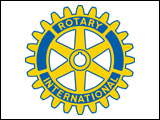An associate professor with the Canadian Centre for Health and Safety in Agriculture says stepping up the focus on reducing risks in the work-place benefits both employers and employees.
Agricultural workers face a broad range of risks from gas and chemical exposures, to dust and particulate hazards to physical hazards to stress.
Adopting a Risk Reduction Mindset in Your Swine Operation was among the topics discussed yesterday as part of Saskatchewan Pork Industry Symposium 2011 in Saskatoon.
Dr. Niels Koehncke, an associate professor with the Canadian Centre for Health and Safety in Agriculture, says employers are responsible for the health and safety of their workers but everyone has a role to play.
In establishing a mindset I think it’s very much a cooperative approach between management and employers and the workers themselves and trying to identify a few key individuals that maybe are very keen and have a strong interest in this and put them in a position and enable them to really promote health and safety and a sort of risk reduction mindset at the work-place so it’s very much a cooperative and a sort of a combination approach.
Everyone really benefits.
Obviously the workers benefit through risk reduction and hazard control in protection of health and safety.
Their families and their loved ones obviously benefit indirectly but the employer benefits as well through improved health and safety practices, through perhaps increased productivity and there’s even demonstrated economic benefit to having an effective health and safety program and a risk reduction program at the work-place and the industry as a whole then also benefits.
There’s certainly evidence of this in other industries, can sometimes prove to be a very powerful recruitment tool to encourage increased employment in that industry and to foster further health and safety training.
I think it’s really a win-win and I think everyone around the table would benefit.
Dr. Koehncke says reducing risks is very much a cooperative approach and a very challenging one.
Source: Farmscape.Ca



